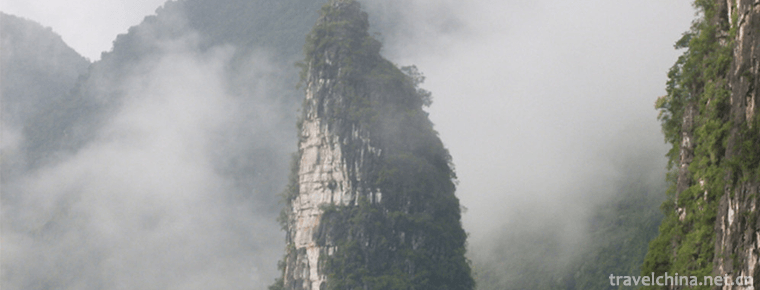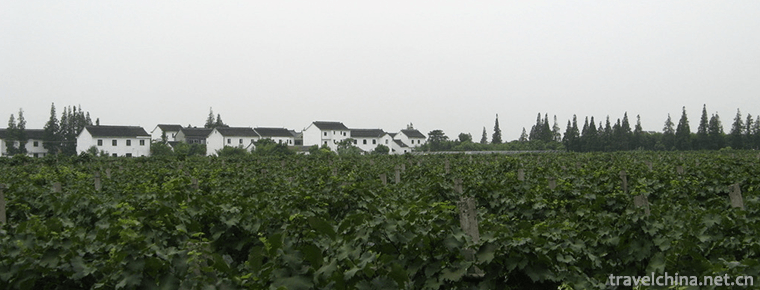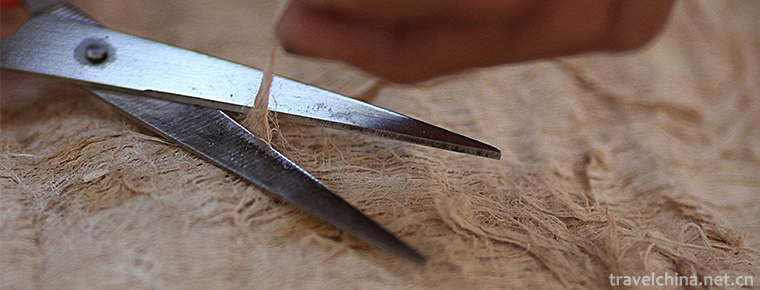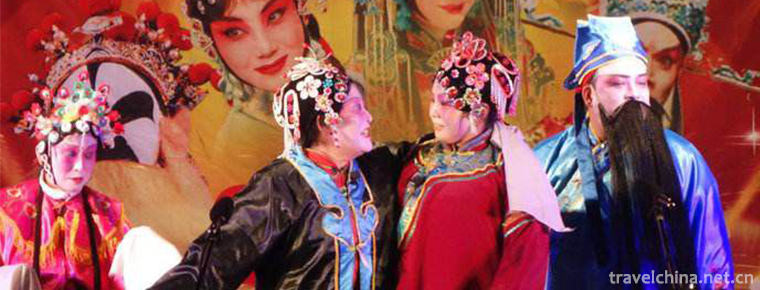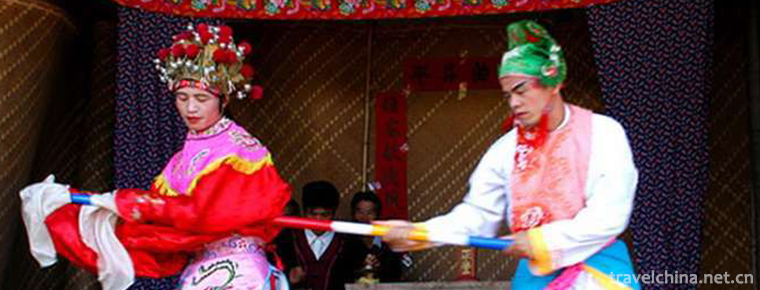Fairy Lake Xianhu Botanical Garden
Xianhu Botanical Garden is located in Liantang Xianhu Road, east suburb of Luohu District, Shenzhen. It relies on Wutong Mountain in the East and Shenzhen Reservoir in the west. It covers an area of 546 hectares. It was built in 1983 and opened to the public formally in 1988. Xianhu Botanical Garden, which integrates plant collection, research, popularization of scientific knowledge and tourism and leisure, is one of the important bases for the scientific research of ornamental plants in China.
Xianhu Botanical Garden was awarded National AAAA Scenic Spot by the National Tourism Administration in 2007 and National Key Park by the Ministry of Construction in 2008.
position
Xianhu Botanical Garden is located in Xianhu Road, Liantang, Luohu District, Shenzhen. It relies on Wutong Mountain, the highest peak in Shenzhen in the East and Shenzhen Reservoir in the west, covering 546 hectares.
The coordinates of the central position of the botanical garden are N22 34 43.10 in the north latitude and E114 09 55.98 in the East longitude.
Climatic characteristics
Xianhu Botanical Garden is located in the subtropical monsoon climate distribution zone. It has high temperature and rainy in summer, mild and little rain in winter, up to 6 months in summer, and warm climate in spring, autumn and winter. The average annual temperature of Shenzhen is 23.7 C, the highest temperature is 36.6 C, the lowest temperature is 1.4 C, the frost-free period is 355 days, the annual sunshine hours are 1975.0 hours, the annual average rainfall is 1608.1 mm, and typhoons occasionally occur in summer and autumn.
Main attractions
Overview
By 2012, Xianhu Botanical Garden has preserved about 8000 species of plants, including Cycad Conservation Center, Magnolia Garden, Rare Tree Garden, Palm Garden, Bamboo Area, Shade Plant Area, Desert Botanical Area, 100 Orchards, Aquatic Botanical Garden, Peach Garden, Gymnosperm Botanical Area and Bonsai Garden.
The whole park is divided into six scenic spots: the sky and human scenic spot, the lake area, the temple area, the desert plant area, the fossil forest scenic spot and the pine, cypress and azalea scenic spot. There are more than a dozen scenic spots, such as Dongtian, Liangyi Pavilion, Jade Belt Bridge, Longzun Pagoda, Hearing Taoge, Range Pavilion, Butterfly Valley Youlan, etc., and a unique museum of paleontology.
Botanical Garden
Mulan Garden
Mulan Garden began to be built in 1991. It is located in Tianren Scenic Area, east to Tianren Tianchi Mountain Road, West to Liangyiting Mountain along the highway, and below the fire protection line. It covers an area of about 200 mu. It has introduced 11 genera of Magnoliaceae, more than 130 species, and has planted more than 25,000 plants. They are from Guangdong, Guangxi, Yunnan, Hunan, Guizhou, Hainan, Fujian, Zhejiang, Jiangxi and Sishi. In Sichuan and other places, there are nearly 20 kinds of rare and endangered plants protected by the state, such as Magnolia sinensis, Magnolia officinalis, Angelica magnolia, Magnolia rosea, Magnolia grandiflora, Sightseeing Magnolia, Magnolia yunnanensis and so on. More than 50 species of hybrid Magnolia were introduced from Xi'an Botanical Garden, Shengzhou Magnolia Research Institute of Zhejiang, including Magnolia evergreen, Magnolia rubra and Magnolia fragrans. Magnolia magnolia, Magnolia multipetalata, Magnolia betti, including China's more successful cultivation of Laughter Star Magnolia, Magnolia longevity, and other species. The area of Magnolia Park can be divided into four parts: Magnolia, Manglietia, Michelia and Hybrid Seedlings.
Fossil forests
Fossil Forest Scenic Spot consists of four parts: Fossil Forest, Shenzhen Paleontology Museum, Hong Kong Return Memorial Forest and Peach Garden. Fossil forests have been built since 1997, covering 20,000 square meters. More than 500 silicified trees from Liaoning, Xinjiang and Inner Mongolia have been collected and introduced. These silicified trees, identified by experts as pine and fir plants, formed in the Mesozoic period of 150 million to 70 million years. It was the most prosperous period in the history of coniferous plant evolution, when tall trees were buried beneath the stratum due to intense crustal movement, and fossils were formed through silicification. So far, it is the only fossil forest in the world that has been preserved in large-scale ex-situ. The Museum of Paleontology uses fossils, photographs, multimedia technology and other materials to explain the history of life on Earth in a systematic and easy-to-understand way.
Shade plant areas
Shade plant area of 40,000 square meters, concentrated cultivation of ferns, Sedum, Begoniaceae, Acanthaceae, Euphorbiaceae, Araceae, Liliaceae, Bamboo Taro, Pineapple and Orchidaceae more than 1000 shade-loving plants. The orchids here have more than 100 minutes, such as dancing orchid, phalaenopsis, Wandai orchid, Cattleland, Dendrobium, Cymbidium, Melan and so on. There are also pine-leafed ferns, the peculiar form of deer horn ferns. The national first-class protected plants, such as Camellia sinensis, Violet vines of Araceae, evergreen mosaic, etc. This area is an important place for primary and secondary school students and the general public to learn plant science knowledge and experience "biodiversity".
- Cycad Preservation Centre
Cycads are a group of gymnosperms from ancient and remnants. The study of cycads can provide a basis for the study of paleoclimate, paleogeography and floristic evolution. Cycad is an important ornamental plant in gardens and has important economic value. Since 1988, the Xianhu Botanical Garden in Shenzhen has collected cycads, and since 1994, the Cycad Garden has been built. On December 18, 2002, the National Cycad Germplasm Resources Protection Center was officially established. The center covers an area of more than 30,000 square meters. It has scenic spots such as fountains and Wannian Pavilion. It also has many sections such as Cycas living material preservation area, Cycas Garden, ancient Cycas forest, Cycas bonsai garden, Cycas breeding greenhouse and nursery. Up to now, the center has collected more than 240 cycads belonging to 10 genera and 3 families from Australia, the United States, Vietnam, the Netherlands, Mexico, Japan, Russia and China, including Guangxi, Guangdong, Fujian, Hainan, Yunnan and Sichuan. After years of construction and development, the Cycas ex-situ conservation center has become a multi-functional international Cycas ex-situ conservation center integrating scientific research, ex-situ conservation, tourism and production.
- Palm Gardens
Palm Garden was founded in 1986. It is located on the East Bank of Xianhu Lake. It covers an area of about 30,000 square meters. It is near Xianhu Lake. It takes more than 10,000 square meters of lawn as its center and is also the center of the whole botanical garden. Since its establishment, it has been introduced from South China Botanical Garden, Xiamen Botanical Garden, Xishuangbanna Botanical Garden, Guangxi Guilin Botanical Garden, Guangzhou Fangcun, Huadu and Zhongshan, Hainan and Kunming for many times, and many seeds have been obtained from the United States, Germany and Taiwan of China through seed exchange. Since introduction, Xianhu Botanical Garden has collected about 60 genera and 150 species of palm plants originating in tropical Asia, America, Oceania, Africa, Pacific islands and China, and has basically built a special palm garden with certain scale and characteristics. Among the palm plants collected in Xianhu Botanical Garden, there are many peculiar tree-shaped and highly ornamental species, such as wine bottle coconut, stick coconut, triangle coconut, red triangle coconut, palm, Manila coconut, garden axis palm, elephant nose palm, etc. Some are still important cash crops, such as coconut, oil palm, sugar coconut and some vine species; others are rare and endangered species originating in China, such as Qiongpalm, Dwarf Qiongpalm, Shishan palm, Axis palm, Dragon palm and so on.
Bamboo garden
China is one of the centers of bamboo distribution and the most abundant bamboo resources in the world. Many genera and species are endemic to China. Bamboo has a wide range of adaptations, mostly distributed in the plains and hills of the tropical and subtropical monsoon climate zone between the Tropic of Cancer and the South Tropic of Cancer. Guangdong is the most abundant area of bamboo resources in China. The climate conditions in Shenzhen are very suitable for the growth and reproduction of bamboo. The bamboo area covers an area of about 20,000 square meters. More than 60 kinds of bamboo are introduced into the area, such as South China, Southwest China, Hubei and Hunan. Such as Xiangfei bamboo, Renmian bamboo, Siam bamboo, Jasper bamboo, Sweet bamboo, Dendrocalamus, etc.
100 orchards
Established in 1987, the 100 orchard covers an area of about 1 hectare and is divided into 9 districts. It mainly collects 33 varieties of litchi and longan of the disease-free family, 27 varieties of yellow peel and citrus of Rutaceae, 5 varieties of peach, pear, loquat of Rosaceae, and 16 other fruit trees of 10 families. It is a local preservation base of fruit varieties resources and also provides a place for the society to popularize fruit tree knowledge. 。 Baiguo Garden is located in the hillside area under the parking lot of the temple area to the vast area near the lake area highway. There are entrances beside the highway in the temple area and the lake area.
Desert flora
Desert botanical area covers more than 10,000 square meters, mainly cactus and fleshy plants, which are mainly produced in America and Africa. Their peculiar shape, elegant taste, various kinds, high ornamental value and economic use have been paid more and more attention in the world, and they have become a new kind of indoor potted plants. Aloe Vera has been cultivated in large quantities for its medicinal value. Cactus plants, like orchids and cycads, are listed as the key protected objects in the Convention on International Trade in Endangered Wild Fauna and Flora. In order to collect and cultivate these plants, three large-scale exhibition greenhouses and three production greenhouses have been established since 1992. More than 1000 species or varieties have been introduced, including more than 40 genera and 600 species of cactus, more than 100 species of Aloe, and nearly 20 families and 300 species of other fleshy plants. The more precious species are amber with a diameter of more than 80 centimeters, giant pillars with a height of 6 meters, 200-year-old trees, and stone flowers of mimetic plants.
- Aquatic flora
The aquatic plant area is located at the west end of the beautiful Xianhu Lake, covering an area of 0.3 hectares. It was founded in 1983. It is divided into aquatic plant exhibition area and aquatic plant breeding area. It provides aquatic flowers for the waters of Xianhu Botanical Garden and enhances its ornamental value.
The exhibition area of aquatic plants, namely the aquatic landscape garden, covers an area of about 0.3 hectares. It has terraces, water pavilions and ornamental aquatic plants, including emergent plants, floating plants, submerged plants and leaf floating plants. Waterscape gardens show different appearance with the alternation of climate and season, with summer lotus viewing as the theme and water surface as the main distribution of red lotus, white lotus and sprinkler brocade.
Aquatic plant breeding area is the base of aquatic plant breeding and scientific research. There are 400 lotus variety pools and 50 water lily pools. There are 400 species and species of aquatic plants from 41 families, 68 genera and 400 species from Wuhan, Guangzhou and Nanjing. Focus on the preservation of lotus family, water lily family plants, including the preservation of Zhongshan lotus, Dashajin, Donghong and other Lotus Varieties of about 200.
Landscape Park
Hongfa Temple
Hongfa Temple was built in Xianhu Botanical Garden on July 1, 1885. It is the first monastery built in China after 1949. On August 31, 1990, with the approval of the Shenzhen Municipal Government, Hongfa Temple was opened to the public as a place of religious activities. Since then, it has become the most prosperous and influential Buddhist temple in Shenzhen.
- Alsophila Lake
Alsophila Lake is a part of the heavenly and human scenic spot. Its water source is a mountain spring located in another cave. The water flows from the outlet to Xianhu Lake through Youxi River.
Garden Information
Opening Hours
Opening hours of Botanical Gardens
8:00-18:00 (Note: Special festivals adjust the opening and closing time of the garden and restrict vehicle access to the garden whichever is the botanical garden management office's notice). Typhoon yellow and above warning, thunderstorm orange and above warning and other extreme weather are closed, and visitors and vehicles are forbidden to enter the park.
Opening hours of the Paleontology Museum
9:00-17:00 (holidays 9:00-18:00, closed every Monday)
Opening time of shade plant area, desert plant area, bonsai garden, Butterfly Valley orchid
9:00-17:00 (Holidays as usual)
Traffic routes
Self driving
Beijing-Zhuhai Expressway - Huanggang Road - Binhe Avenue - Yanhe Road - Luosha Road - Pengxing Road - Xianhu Road - Xianhu Botanical Garden.
Public transport
Tourists can take bus No. 382, 220 and 202 to Xianhu General Station. Buses No. 218, 27, 57, 113, K113, 333 and 336 arrive at Luohu Foreign Language School and get off and walk northward from Xianhu Road.
Subway
Visitors can take the subway to Huangbeiling Station (Exit C) and walk to Xinxiu Interchange Bus Station to transfer to No. 382 Bus to Xianhu General Station.
Viewing time
All seasons are suitable.
Honors
After more than 20 years of efforts and exploration, Xianhu Botanical Garden has continuously achieved good results and honors, and now it is one of the "Ten Tourist Spots of Pengcheng". Xianhu Botanical Garden has also been awarded "Guangdong Environmental Education Base" (1998) , "Shenzhen Environmental Education Base" (1998) , "National Youth Science and Technology Education Base" (2002) , "China Biodiversity Protection Demonstration Base (2004) ,"Guangdong Popular Science Education Base"(2005) ,"National Popular Science Education Base". (2006) , "Shenzhen Science Popular Education Base " and other titles.












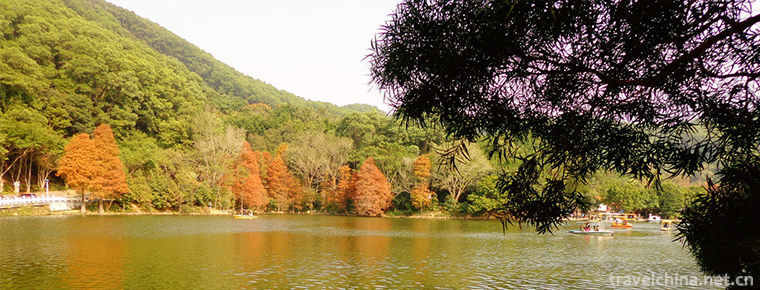
-
Taihang Grand Canyon
Linzhou Taihang Grand Canyon, located in the northwest of Henan Province and Linzhou City in the eastern foot of the southern Taihang Mountains.
Views: 255 Time 2018-12-09 -
The peak of unique beauty Duxiufeng
Duxiufeng is located in Jingjiang King's City in the center of Guilin City, Guangxi. It is an inseparable part of the King's City Scenic Area. Gufeng protruding, steep, magnificent, known as "a p.
Views: 153 Time 2018-12-12 -
Malu Grape Theme Park
Malu Grape Theme Park is located in Malu Town, Jiading District, Shanghai. It is a grape industry base and agricultural tourism demonstration site that integrates grape planting, production, scientifi.
Views: 116 Time 2019-02-06 -
Zha Quan
Zha Quan is one of the five major schools of traditional Chinese long boxing, which is widely spread among Hui people. It originated in Shandong Province.
Views: 142 Time 2019-04-15 -
Production Techniques of Bark Cloth of Li Nationality
Li bark cloth production technology is based on the bark of plants as raw materials, after beating technology to produce cloth technology..
Views: 90 Time 2019-05-12 -
Mamuteyi Ma mu te yi
Mamuteyi, translated into Chinese as Education Classic, is the product of the slavery society of the Yi people in Liangshan. In the Yi language, "Ma" means education, instruction and persuas.
Views: 121 Time 2019-05-16 -
Qinghai Lake offering sacrifices to the sea
Qinghai Lake is a pearl on the plateau of the mangyang snow area, which has been admired by people for thousands of years. This paper systematically expounds the origin, course.
Views: 194 Time 2019-06-10 -
Quzi Opera
Quzi Opera, the traditional drama of Dunhuang City, Baiyin City, Huating County and Xinjiang Production and Construction Corps in Gansu Province, is one of the national intangible cultural heritage..
Views: 122 Time 2019-06-11 -
Linking Luhe boxing
Xinyi Liuhe Quan, also known as Xinyi Quan and Liuhe Quan, is one of the most famous excellent types of boxing in China, which combines fighting, fitness, self-defense and health preservation. It is o.
Views: 143 Time 2019-07-06 -
Yongan Daqiang Opera
Yongan Daqiang Opera was formed in the mid-Ming Dynasty. It is a genre of Yiyang Opera. It is called Daqiang Opera because it is "big gong, big drum and big voice singing high tune". During .
Views: 215 Time 2019-07-14 -
Ganzi milk dregs
The traditional biscuit snack "Tui" is made of milk dregs and butter. And made from milk dregs. After the milk i.
Views: 198 Time 2020-12-06 -
Nanchong medical and health
By the end of 2019, Nanchong has 8457 medical and health institutions (including village clinics), including 166 hospitals and 8250 primary medical and health institutions. The number of beds in medical and health institutions was 43726, an increase of 4.9% over 2018.
Views: 313 Time 2020-12-17

